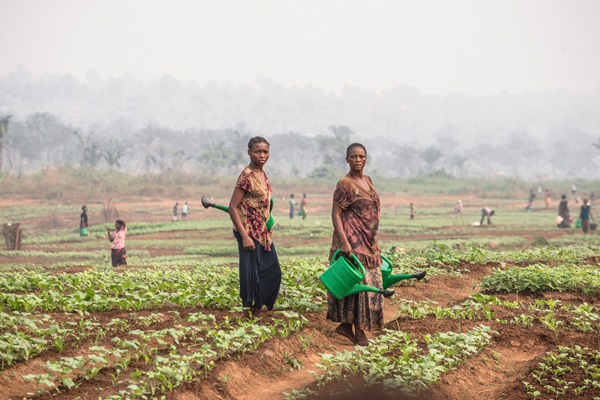
Kinshasa – An estimated 6.7 million people are experiencing crisis or emergency levels of food insecurity in North and South Kivu and Ituri, representing a 10 percent increase from last year.
The latest Integrated Food Security Phase Classification (IPC) analysis released by the government found that 25.8 million people continue to face crisis or emergency levels of food insecurity triggered by poor harvests, violence-driven displacement, disease, unemployment, and collapsing infrastructure.
The report shows that areas worst affected by food insecurity include Djugu and Masisi in Ituri and Rutshuru, Nyiragongo, Goma, Beni, and Mambassa in Nord Kivu. Violence and insecurity have cut off whole communities from their fields. Even when food is available, higher prices mean poor households need help to afford sufficient and proper nutritious food. The conflict has also made the delivery of humanitarian assistance difficult.
“The fight against food insecurity remains the most critical challenge for the Democratic Republic of Congo. The IPC identified the number of people in food insecurity throughout the country," José Ilanga Lofonga, Secretary General of the Ministry of Agriculture, explained. "We must mobilize support and resources and protect the households who depend on food assistance in territories affected by conflict."
"Food insecurity in the DRC over the past five years remains among the highest in the world. It places vulnerable populations in a tough situation,” said Aristide Ongone Obame, FAO Representative in the DRC. “Despite this situation's structural and cyclical causes, investing in agricultural development pays off with multiplier effects. The DRC urgently needs additional funding to boost agricultural production and promote food and income sources diversification."
"We are worried by the number of people displaced by conflict, leaving more families hungry. WFP is ramping up its assistance schemes to improve livelihoods. However, DRC needs greater investments in agriculture and rural development to turn the tide against hunger." WFP DRC Country Representative and Director Peter Musoko, said.
UN Agencies Step up Action to Support the most vulnerable
FAO will provide multi-sectoral assistance to strengthen food production and generate income for vulnerable populations in areas severely affected by high levels of acute food insecurity. FAO requires US$106.4 million to assist around 1.8 million people in the crop, livestock, and fish production sectors in 2023.
During the 2022/2023 agricultural season, the organization assisted nearly half a million people with seeds and farming tools to strengthen their livelihoods and increase local food production. In addition, an extensive FAO-improved seed production program is underway to replenish the national seed capital and increase the availability of improved seeds adapted to climate change and with high nutritional value.
WFP plans to reach 7.1 million people in DRC this year. While emergency food assistance is critical to arresting hunger, WFP's resilience-building work fosters food self-sufficiency, sustainable livelihoods, early shock recovery, and long-term peace. For example, WFP's school meals program encourages the enrolment of children in schools, helps them stay there, and boosts local economies by providing markets for smallholder farmers. WFP needs US$ 257.8 million to sustain critical programs for the next six months.